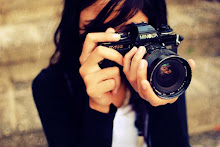Weapons of War or Just Pranks: Stink Bombs, Sneezing Powder and Mini “pop pop” Firecrackers.
STINK BOMBS
What are they? When are they used?
Stink bombs are devices designed to release an unpleasant foul smell. They are mainly kwon world-wide as a throw-able prank item but they also can be used as a military grade weapon or as a riot control agent.
What is in it?
Low volatile organic compounds are mainly used to make these stink bombs. Below are a lists of chemicals in commonly known to be used in stink bombs and what they smell like:
| Chemicals used: | Smells: |
| Hydrogen sulfide | Rotten eggs |
| Skatole | Feces |
| Butanethoil | Skunk spray |
| Ethylamine | Fishy smell |
The Guinness Book of Records had listed down the two smelliest compound mixed together by five or more chemicals. One of them is the “US Government Standard Bathroom Malodor”, which is a mix of eight chemicals which results in a stench so bad that it smells like human feces, only more revolting. The other is the “Who Me?”, a mix five sulfur containing chemical compounds and smells like rotting food and carcasses. The former has a long history as it is used in World War II by the French Resistance against German invaders
The Cire Trudon Company
Cire Trudon was founded in 1643, making candles of many different shapes and sizes for the Parisian and royal families. Making its name with scented candles, now, Cire Trudon has made a kind of stink bomb that is different than any other. When broken open, instead of foul nauseous smell, a sweet, delightful scent is released.
SNEEZING POWDER
What are they? When are they used?
As the name suggests, sneezing powder packages contain powders that, once induced, causes sneezing upon the person. Commercially known as a practical joke item, but it was used in World War II as well. Nowadays, sneezing powders contain only plant properties that may or may not cause any rash, indigestion, fainting, hypotension, heart attacks and other side effects.
What are in them?
Sneezing powders today are harmlessly made from pepper powders, white or black. Before, it was an ingredient known scientifically as Veratrum album (White Hellebore). It was very dangerous as it is a poisonous medical plant as it can paralyze the nervous system.
This certain packet was from the 1940’s. It was first introduced by the Germans in World War I as a chemical weapon and used against the French. Year 1914, the Germans have developed dianisdine salts which then lead to the original sneezing powder chemical, dianisidine. Sneezing powder was originally known as Dianisidine Chlorosulphonate. Governments have banned dianisdine, since even a tiny dose of sneezing powder can cause a full room of people to have a sneezing fit.
What are they and when are they used?
Firecrackers and fireworks originated from China. They were first used as protection to ward off evil spirits. But today, they are famously used in celebrations and events such as Chinese New Year and Hari Raya in Malaysia and in other countries as well. When lit, fireworks will fly to the skies and explode with an enormous BANG!, added with bright colours and fancy designs. Firecrackers are usually tied in a bunch making a pop crackle noise as they explode simultaneously. Firecrackers and fireworks are packed very tightly for pressure built-up for it to work out best.
What are their contents?
These ‘pop-pop’ firecrackers contain a small amount of black powder (traditional gunpowder) and gravel. The gravel in these crackers rubs against each other and causes friction which ‘sets off’ the gunpowder, when it is thrown or stepped on.
Gunpowder, before the 20th century, is made of sulfur, potassium nitrate and charcoal. It can also be made with potassium nitrate and charcoal without the adding of sulfur into it but it wouldn’t be as strong. It is classified as a low explosive.
Gunpowder in military artillery nowadays have been replaced by a powder called “smokeless powder” as they call it because it doesn’t produce an smoke as black powder would have. Its term smokeless doesn’t mean that it has smoke-free properties but its combustion products were mainly gaseous.
Still, nowadays, pop pop firecrackers such as mentioned still uses black powder and gravels.
So Weapons of War Or Just Pranks? You decide.




the pops contain a small amount of silver azide , not the insensitive gunpowder
ReplyDelete